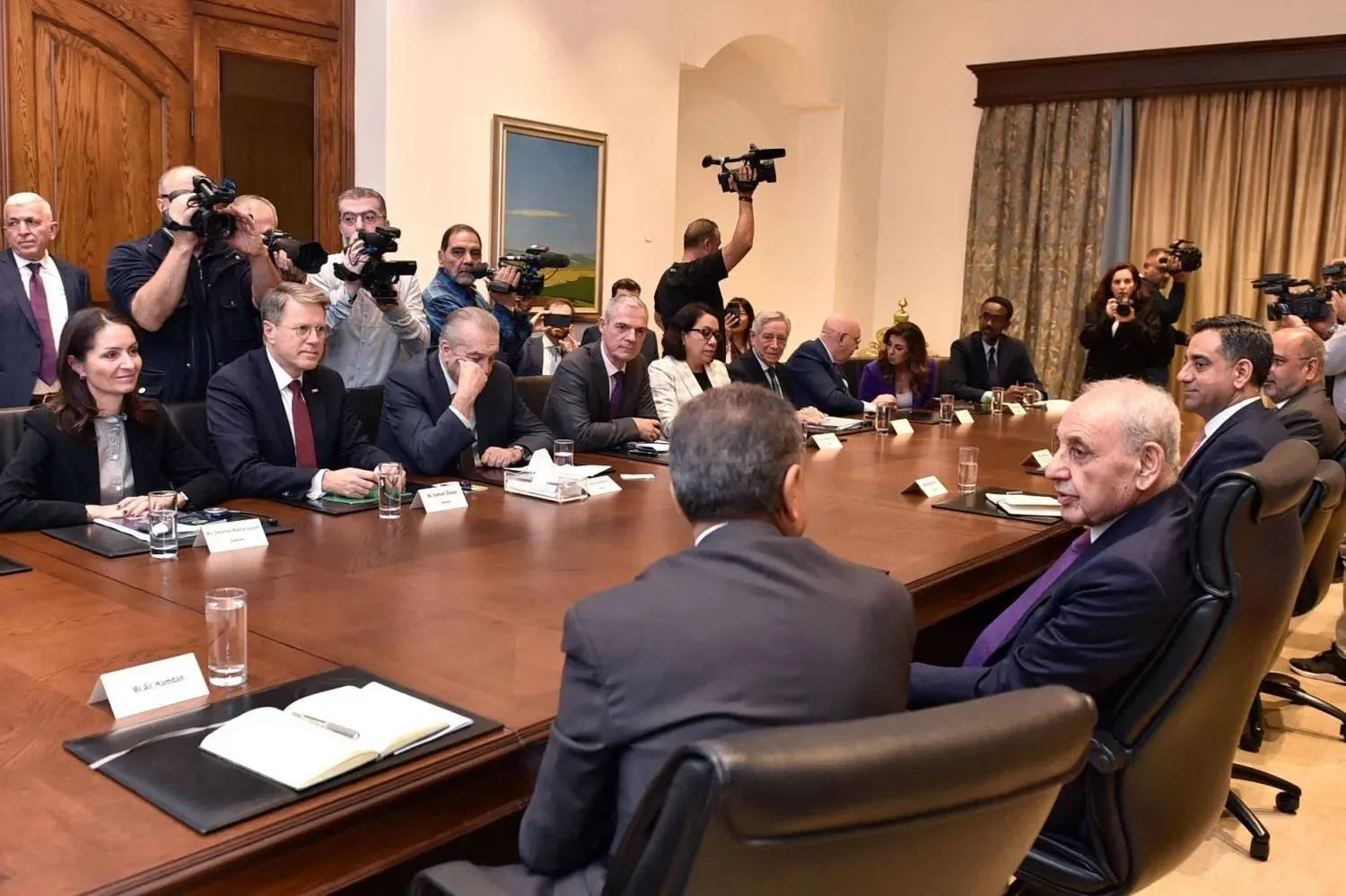A Houthi drone attacked an oil port in Shabwa a day after the US Ambassador to Yemen, Stephen Fagin, visited Hadramout Governorate to support the Yemeni government and local authorities.
The attack, which did not cause any casualties, is the third of its kind on oil export ports in Yemen.
Houthis previously attacked al-Dabba port in Hadramout, and another in Shabwa, within the group's attempt to blackmail the legitimate government into sharing oil revenues.
Sources at the Yemeni Oil Company said that the attack on Qena port in Shabwa was on Wednesday morning, and the drones dropped several bombs in the sea near a vessel unloading its shipment.
Yemeni sources said a vessel carrying diesel was unloading its cargo at the port when the Houthi drone launched its missiles. The air defense forces downed it.
According to local Yemeni reports, two of the ship's crew - an Egyptian and a Sudanese - were slightly injured by shrapnel.
Earlier, the Yemeni government pledged to protect economic and oil facilities from Houthi terrorist attacks. However, the militias continue to threaten to target ships and ports.
- Casualties increase in Marib
The data of the Executive Unit for IDPs Camps Management in Marib Governorate stated that four persons were killed, including two girls, and 23 others were injured during a Houthi attack on an ammunition depot.
The Unit is concerned with the affairs of displaced persons who escaped Houthi repression. It accused the militia of targeting Marib, including the displacement camps, with ballistic missiles and drones.
It also reported that 13 homes of displaced families were damaged, three tents were burnt, and 53 water tanks were destroyed due to missile shrapnel.
The Unit's statement reported that a "state of fear and panic" prevailed among the displaced, especially women, children, and the elderly.
It called on the UN and the international community to pressure the militia to stop its attacks on camps and population centers and abide by international and humanitarian laws.
- US government support
Ahead of the Houthi escalation, the US Ambassador to Yemen, Steven Fagin, visited Hadramout within the context of Washington's support for the legitimate government and local authorities.
Fagin and the accompanying delegation met with the local authority, headed by Governor Mabkhout bin Madi, and discussed boosting support in security, combating terrorism, and supporting vital development sectors.
"The visit comes to show Washington's support for Yemen, and Hadramout in particular,” the media center of the governor quoted the US ambassador as saying.
Fagin pointed to his country's condemnation of the Houthi drone attack on the Dabba port and its impact on the Yemeni economy, announcing that Washington has allocated $1 billion for humanitarian aid and approved the provision of various development projects in Yemen.
According to Yemeni media sources, Fagin affirmed the international community's support, led by the US, to bring peace to Yemen, reiterating their commitment to assisting Yemenis under challenging conditions.
The recent Houthi threats obstructed the resumption of Yemeni crude oil exports.
The Yemeni government confirmed that it coordinated with the operating oil companies to continue their work, affirming that the crisis cell is continuously working to take necessary measures in coordination with local and international companies and partners to ensure the continuation of work.
Earlier, Yemeni Prime Minister Maeen Abdul-Malik said that Houthis' threats to national economic facilities and civilian infrastructure and neighboring countries would be dealt with firmly to protect the capabilities of the Yemeni people, international navigation, and global energy stability.









